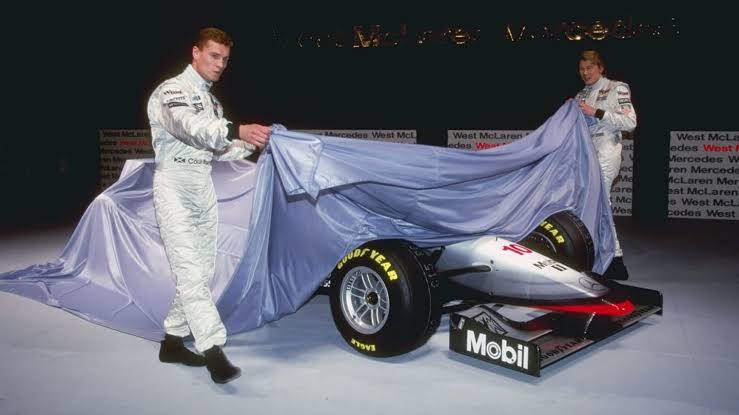McLaren is dominating the 2025 F1 season with five wins from the opening six races.
Oscar Piastri heads the drivers’ standings from teammate Lando Norris while the team itself enjoys a 105-point margin over Mercedes in the constructors’ championship.
The secret to McLaren’s performance appears to lie in its race pace.
While rapid over a single lap, McLaren has not proved significantly faster than Red Bull or Mercedes.
However, over a race stint, the papaya squad has enjoyed as much as a second-per-lap advantage at times.
The ability of the MCL39 to manage its tyres is widely considered the cornerstone of that performance and has prompted significant interest and speculation from rivals
Following last year’s Singapore Grand Prix, it was suggested McLaren used water in its tyres.
That allegation came when a rival saw a jet of water squirt a McLaren mechanic while handling the tyres post-race.
It was claimed the water was used to cool the tyres, allowing Piastri and Norris to keep them in the operating window to both extend their life and extract the most from a performance perspective.
There has, however, been no proof of such a system, which would contravene the F1 technical regulations.
McLaren has also rejected those claims, with the squad’s CEO Zak Brown mocking them with ‘tire water’ labels on his drink bottle in Miami.
A new theory has now come to light courtesy of Martin Buchan’s YouTube channel, B Sport.
Buchan suggests that McLaren’s brake drum is central to the team’s current performance.
That builds on comments from Red Bull, which has admitted it is monitoring other teams’ brake drums with thermal cameras during pit stops.
That has revealed the brake drums on the MCL39 are cooler than its rivals, meaning less heat is transferred from the hub into the wheel and the tyre itself.
According to Buchan, a reason for that could be that the cooling paths around the brakes and brake drum have been combined, where usually they are separate.
Further, he posits that once the tyres are up to temperature, the airflow reverses direction via the use of bimetallic strips that channel air once a determined temperature is set.
That’s achieved through the use of ‘phase changing material’, he claims.
By using different phase changing materials, in varying quantities, the temperature trigger point can be controlled.
Adding credibility to the claim is that Buchan is an ex-McLaren employee, and completed a doctoral thesis on phase changing materials in motorsport while with the Woking squad.
Then, it related to the use of cooling in batteries but could easily be used in different applications.
Buchan suggested phase changing material could be used in the brake drum covers to mitigate the heat transfer, leaving McLaren with a performance advantage over the competition.
“The system is completely passive,” he claimed.
“It doesn’t need an actuator or electricity, and who looks inside a drum cover?
“And because the inside design material is free, this system is legal.”
It’s a plausible explanation as to how McLaren is able to bring its tyres up to temperature without overheating them, which in turn would leave the squad with a significant performance advantage over its rivals.
